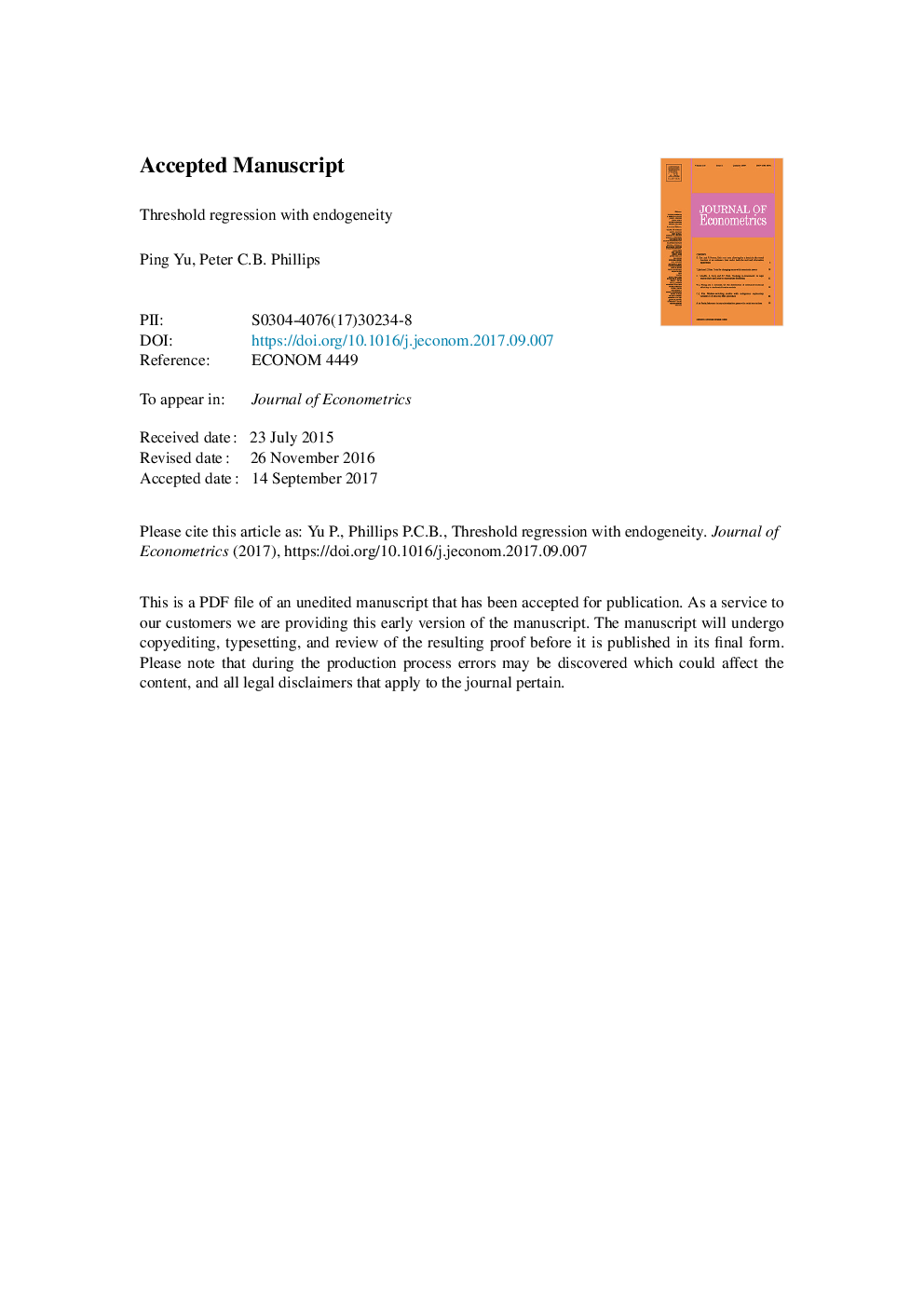| Article ID | Journal | Published Year | Pages | File Type |
|---|---|---|---|---|
| 7358066 | Journal of Econometrics | 2018 | 39 Pages |
Abstract
This paper studies estimation in threshold regression with endogeneity in the regressors and thresholding variable. Three key results differ from those in regular models. First, both the threshold point and the threshold effect parameters are shown to be identified without the need for instrumentation. Second, in partially linear threshold models, both parametric and nonparametric components rely on the same data, which prima facie suggests identification failure. But, as shown here, the discontinuity structure of the threshold itself supplies identifying information for the parametric coefficients without the need for extra randomness in the regressors. Third, instrumentation plays different roles in the estimation of the system parameters, delivering identification for the structural coefficients in the usual way, but raising convergence rates for the threshold effect parameters and improving efficiency for the threshold point. Simulation studies corroborate the theory and the asymptotics. An empirical application is conducted to explore the effects of 401(k) retirement programs on savings, illustrating the relevance of threshold models in treatment effects evaluation in the presence of endogeneity.
Keywords
Related Topics
Physical Sciences and Engineering
Mathematics
Statistics and Probability
Authors
Ping Yu, Peter C.B. Phillips,
